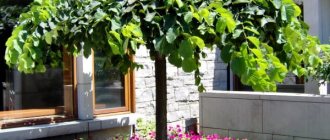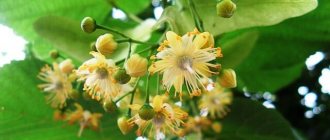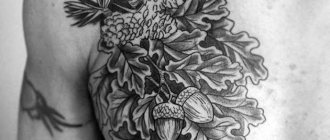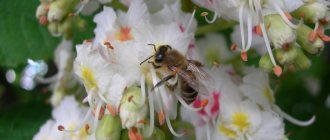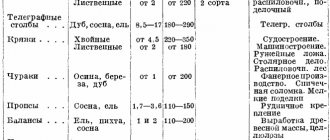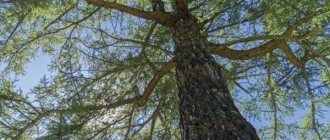- Encyclopedia
- Plants
- Linden
The linden tree is a deciduous tree; the crown is wide, often oval in shape, and its height exceeds 28 meters. In nature, there are over 40 species of these trees; they are long-lived trees, living over 450 years.
The linden tree is extremely unpretentious, grows well in shady areas, is frost-tolerant, has a powerful root, and is well developed. Blooming months for linden are late June, early July. Fragrant linden flowers have many healing properties, so the tree is very loved by people and is protected from destruction, both in our times and many centuries ago.
The wood of the tree has a very soft structure; therefore, it is not used on construction sites, but is used to make kitchen and household utensils: various wooden utensils, ladles, barrels, plywood, toys, crafts, and expensive furniture.
Linden forests exist in nature; they are located in Great Britain, the Alps, Tatarstan, Bashkiria, Chuvashia and other places. In such forests, as a rule, various types of linden are combined. The ideal soil for this tree is species that are rich in large amounts of humus. After all, it is thanks to fallen and rotted leaves that mineral salts, which are vital for linden, enter the soil. In autumn, the roots of the tree replenish their supply of minerals and organic substances, depleted over the summer. In linden forests there is a greater number of earthworms than in other forests, because when the leaves decompose, food is formed for them. And a large number of worms is an indicator of good soil condition. The area of linden forests is much smaller in extent than other forests.
In Greece, linden is called “the bees’ favorite tree,” because linden is a very healing and tasty honey plant. During its flowering, one linden tree produces as much honey as a field of buckwheat.
Linden is highly valued in folk medicine, cosmetology, and many medications are made with its composition. Linden decoction helps against many ailments: viral diseases, colds, insomnia, nervous excitability, as well as diseases of the stomach and intestines. Compresses and lotions with linden infusion are used to treat burns, wounds, as well as to completely get rid of various types of ulcers and acne. In cosmetology, linden blossom is used to make various body lotions, creams, masks, and bath foam.
Linden description:
The linden tree can reach a height of up to 30 meters. The crown of the tree is wide and oval. The trunk is straight and strong. The root system is quite powerful. The leaves are shaped like a heart. On the outside the leaf has a more saturated green color, and on the other side the leaf is lighter. The edges of the leaf are jagged. When the leaves bloom, there are stipules that fall off quite quickly. And nectar glands may very often be present at the base of the leaf.
When does linden bloom?
Linden begins to bloom around June-July and flowering lasts about 2 weeks. All this time, there is a pleasant aroma around the trees that fills the air.
The flowers of the tree are collected in groups of 2 or more together, forming umbrella-shaped inflorescences. The flowers are light yellow. The inflorescences emerge from a bract leaf, which is very different from ordinary leaves. The flowers have a very pleasant smell, which can spread over a fairly long distance. Linden is one of the most important honey plants. Linden honey is highly valued and considered one of the best varieties.
Interesting answers
- Story
- Important scientific discoveries of the 20th century - message report (world around us, grade 4, grade 9)
Man has always strived to improve his life, invent something new, and explore the unknown. And the 20th century is rightfully considered the richest in scientific discoveries and achievements - Report about the common hedgehog (message)
The hedgehog is considered a predatory animal. It has a fairly small body size. Lives mainly in mixed and deciduous forests. May also live in the steppe - Writer Alexandre Dumas.
Life and work Alexandre Dumas is one of the most famous French writers of the early 19th century, the creator of many cult novels and plays. - Report on the topic Earthquakes, message 5, 6 grades
An earthquake is vibrations of the earth's crust of varying power. About 1 million weak and about 2 thousand strong earthquakes are recorded annually. A powerful earthquake can cause severe destruction.
Linden fruits
Linden fruits are nut-shaped. They are light in color at first and then become dark in color. They are the size of a pea. They fall in a whole bunch at once. Each such cluster has a special leaf, which spins when it falls and helps the seeds fly as far as possible from the tree in order to give life to a new plant.
Linden propagation
Linden can reproduce in several ways. First of all, seeds, as well as seedlings, shoots and stem cuttings. The ideal soil composition for a linden tree is 1 part turf soil and 2 parts sand with humus.
To propagate linden by stem layering, you need to lower the lower branches down and dig them into small trenches for 1-2 years. When the branches take root, they are separated from the tree and carefully transplanted to the right place. This must be done in early spring before the first buds appear.
The easiest way of propagation is propagation by shoots or root layering. The linden itself produces such layerings. All that remains is to carefully disconnect them and transplant them to the right place.
It takes years for linden to propagate from seeds. The first step is to place the seeds in sawdust or damp sand for 5-6 months in a cold place. At the same time, do not forget to moisten the sand or sawdust. This process is called stratification. It is for this reason that linden seeds do not germinate the following spring after falling to the ground. They do not have time to undergo stratification. And only after a year they are able to germinate. In the spring, when the seeds germinate, they are planted in the soil. The strongest of them germinate and turn into seedlings.
If you liked this material, share it with your friends on social networks. Thank you!
2. The botanical name is Tilia, the genus of linden was borrowed from the Greek word “ptilon” (wing) by the appearance and properties of wing-shaped bracts. With their help, the plant's seeds become volatile and disperse throughout the area.
3. These trees are found only in the Northern Hemisphere of the Earth.
4. A tree such as linden is widespread in Russia and many other countries.
5. Among different peoples inhabiting the northern hemisphere of the Earth, linden is one of the most favorite tree plants.
6. There are about 45 species of linden in the world, as well as about 100 more hybrid species. Moreover, not all of them are trees - there are also shrubs.
7. There are so many linden trees growing in the forests of Russia that we consider this tree to be originally Russian. However, in the countries of Southeast Asia, more species of linden grow than in our country.
8. There are 15 species of this tree, which grow only in China.
LINDEN SMALL LEAF
9. The most common species in the European part of Russia is small-leaved linden.
10. Since ancient times, most Slavic peoples have revered linden as a holy plant and considered it a talisman. Linden trees were traditionally planted near temples.
11.According to Christian belief, the Mother of God found shelter under the crown of this plant blessed by God, so miraculous icons often appear on its wood, and lightning never strikes a linden tree, so during a thunderstorm it is customary to hide under these trees.
12. This tree is used in heraldry, and especially widely in the Czech Republic. A stylized image of a linden tree can be seen on the flags and coats of arms of various Czech cities.
13. The name of the German city of Leipzig comes from the name of the tree “lipa”. Just like the name of the Russian city of Lipetsk, which was called “Lipskiye Zavody” when it was founded.
14. The names of the summer months in some European languages are derived from the name linden.
15. In pre-Christian legends of the Slavic peoples, linden was personified with the pagan goddess of spring Lada, the patroness of marriage and family ties.
LINDEN HEART-SHAPED
16. Among the peoples of Western and Eastern Europe, the cordate linden, the most common species of the genus, was especially revered.
17.It is also extremely valued in Siberia, where it has been growing in relict linden forests and groves since time immemorial.
18. Linden blooms later than other trees in the middle zone - its flowers bloom only in mid-summer.
19. It is in the middle of summer that the air in our forests is filled with the aroma of honey and the buzzing of bees is heard. This is a linden blossom - a tree familiar to us, found in many parts of Russia.
20. The smell of linden blossoms makes you stop to inhale the sweet aroma.
LINDEN BLOOMING
21. Bees love linden because this tree is an excellent honey plant.
22.From an average adult linden tree, bees can collect enough nectar to produce 15 kilograms of honey.
23. Linden blossoms under natural conditions in the 20th year of life, and in plantations - only after 30 years.
24. On average, a linden tree lives for three to four hundred years, although linden trees are known to live for up to a thousand and a quarter years.
25. The trunk diameter of particularly powerful linden trees can reach four to five meters.
26. Linden produces more beneficial phytoncides than other deciduous trees.
27. It is a natural filter for air purification - it actively absorbs carbon dioxide, producing oxygen in return.
28. Dust and pathogens stick to the sticky parts of the tree and are washed away by rain; the spreading crown protects from wind and noise, provides coolness in scorching heat, and in winter increases the thermal microclimate in places where they grow in groups.
29. Our ancestors also knew about this, so they brought children weakened by illness to linden groves in the hope of their speedy recovery. This often happened.
30. The popular names of a tree useful and beloved by people characterize its use in economic activities. Among some Slavic peoples, they reflect the main feature of the linden tree - the stickiness of the buds, foliage and bark (the Old Slavic “lipata” means “to stick”).
31. In some regions of Russia, local names for linden have long been used with a direct designation of its use on the farm. Lutoshka is a young linden tree whose bark has been removed to obtain bast. Peasants made multi-season shoes from it. We can say that the linden tree once covered the entire peasant population of Rus'.
32.Lubnyak – older linden trees, the bark of which was used for making bast. It was used as a roofing material; boxes and containers for bulk products were made from it.
33. Mochalnik, lychnik - thickets of linden, which were used for various household needs. Linden was used in Rus' mainly for bast, which was used for making bast, mats, matting, and also for bast shoes.
34.Liponka, sticky - in these affectionate names of the tree people express gratitude for its gifts - soft but durable wood, from which weaving looms, household furniture and utensils, toys, musical instruments, carved wooden decorations, and, of course, its gifts and healing properties.
35. In Russian folklore, in terms of the number of mentions, linden ranks first among all trees.
36. People have known for a long time about the beneficial properties of linden - its various ingredients that can be obtained from it, from the bark to the leaves and inflorescences.
37. Linden has many healing properties, due to which it is often used in folk medicine, as well as for the manufacture of medicines.
38. A decoction of the flowers of this tree is widely used in traditional medicine. It is believed to help against colds.
39. A special role in scientific and folk medicine is played by linden charcoal, which has the ability to bind harmful substances in quantities exceeding its own volume by 90 times.
40. Linden can cure many diseases that people are susceptible to. But to do this, you should only harvest fresh raw materials from trees growing outside the city limits and away from roads, and also dry, store and use them correctly.
41.For the needs of a family, approximately 300 grams of dried linden flowers may be needed for 1 - 2 years - this requires no more than 1 kilogram of fresh ones. Therefore, you should not be predatory with the gifts of linden. There is no reason to make supplies for future use - their healing power decreases sharply over time.
42. The healer and naturalist, Abbess Hildegard of Bingen (1098-1179) in her work “The Book of the Art of Healing” called the linden “a very warm plant”, in which “heat is contained in the roots, rises from there to the branches and leaves”, and advised to bring it closer linden to their homes, planting it on personal plots, in city gardens and streets, along roads.
43. Different types of linden, heart-shaped, large-leaved and silver, do not bloom at the same time, but in turn. You can benefit from this if you cultivate them in the same planting. Then the nectar collection period for bees will last from 10-15 days to one and a half months.
44. During the Great Patriotic War, the linden tree helped our partisans more than once. For example, in the Chernihiv region they went on reconnaissance missions and carried out sabotage missions wearing bast shoes. It turns out that a person shod in bast shoes does not leave obvious traces, and, most importantly, these traces were not picked up by German sniffer dogs.
45. All parts of the linden tree and its products have pronounced medicinal, as well as taste or nutritional properties.
LINDEN HONEY
46. Linden honey is popularly called liquid gold. “Lipets” is the name given to a variety of real linden honey; its taste and medicinal properties are better than many other varieties. It is very fragrant and transparent when freshly pumped out. It crystallizes after 3–4 months without losing its qualities. If it remains liquid, then it is clearly not linden honey.
47. Official medicine offers an infusion of linden flowers called Infusum florum Tiliae as a diaphoretic and a good antipyretic. The taste and effectiveness of the healing drink will only improve if you add a little honey and lemon juice to it.
48. Probably few people know that you can make jam from linden flowers.
49. It’s not at all difficult to prepare “linden” at home - a tasty, aromatic “female” liqueur with a strength of 32%. It is also used as a medicine for frequent cramps, coughs, and colds. To do this you will need 0.5 liters of vodka, a dessert spoon of linden flowers and the same amount of linden honey.
LIME LARGE-LEAFED
50. From very young, soft and sticky leaves, as well as linden buds, you can prepare delicious salads, combined with other early greens and vegetables, seasoned with various sauces.
51.Young linden leaves can be used to prepare dolma (small cabbage rolls), green cabbage soup, soups, okroshka, tonic drinks, kvass and homemade wine.
52.Pickled kidneys are the same piquant addition to vinaigrettes, salads, and solyankas as pickled capers.
53. It turns out that linden “nuts” are edible. Linden fruits are small “nuts” that ripen on its branches, somewhat reminiscent of the taste of poppy seeds, pumpkin seeds, and almonds. They can be used as an additive to any dishes in which nuts are placed... And you can also extract vegetable oil from linden nuts, which is not inferior in its properties to olive oil.
54. In the past, tar was obtained from linden wood. Now it is produced in other ways, cheaper and more environmentally friendly.
LINDEN WOOD
55. Linden wood is soft and easy to work with. It is actively used in the production of plywood, furniture, dishes and other kitchen utensils.
56. Linden has also long been widely used in wood carving, as it has pure white wood and is easy to cut.
57. In many works of folklore, soft linden is contrasted with hard oak (in nature they often coexist with each other).
58. It is no coincidence that there was a custom - to choose a linden pole for hanging a girl’s cradle and an oak pole for a boy’s cradle. Hence the origins of the Russian proverb: “Girls are phony, and guys are oak.”
59. In the totemic beliefs of the Baltic people, the linden tree was a symbol of the feminine principle with its softness, beauty and tenderness, the embodiment of kindness and generosity.
60. The word “linden” in the meaning of “fake” is widely used, although few people know why. The fact is that in the past, soft linden wood was used to forge seals, and some unscrupulous shoemakers made shoe soles from it. Since then, the indignant exclamation: “Lime tree!” entrenched in the meaning of forgery. However, this did not affect the reputation of the beautiful linden tree. It remains a beloved and respected tree among the people.
photo from open sources
